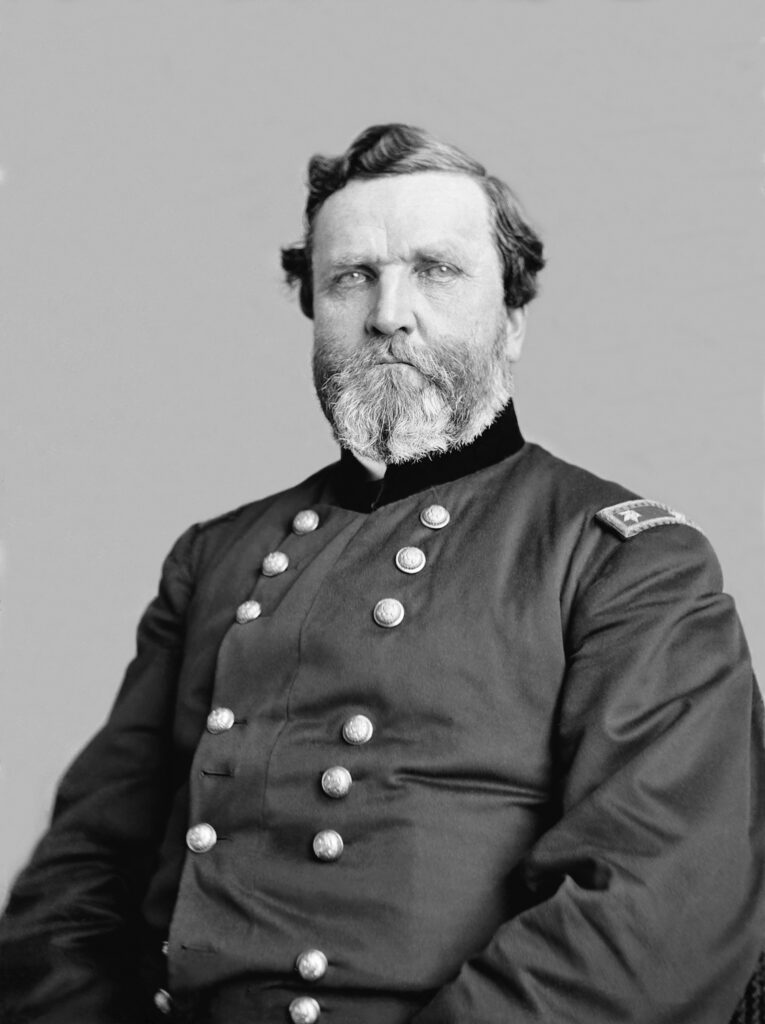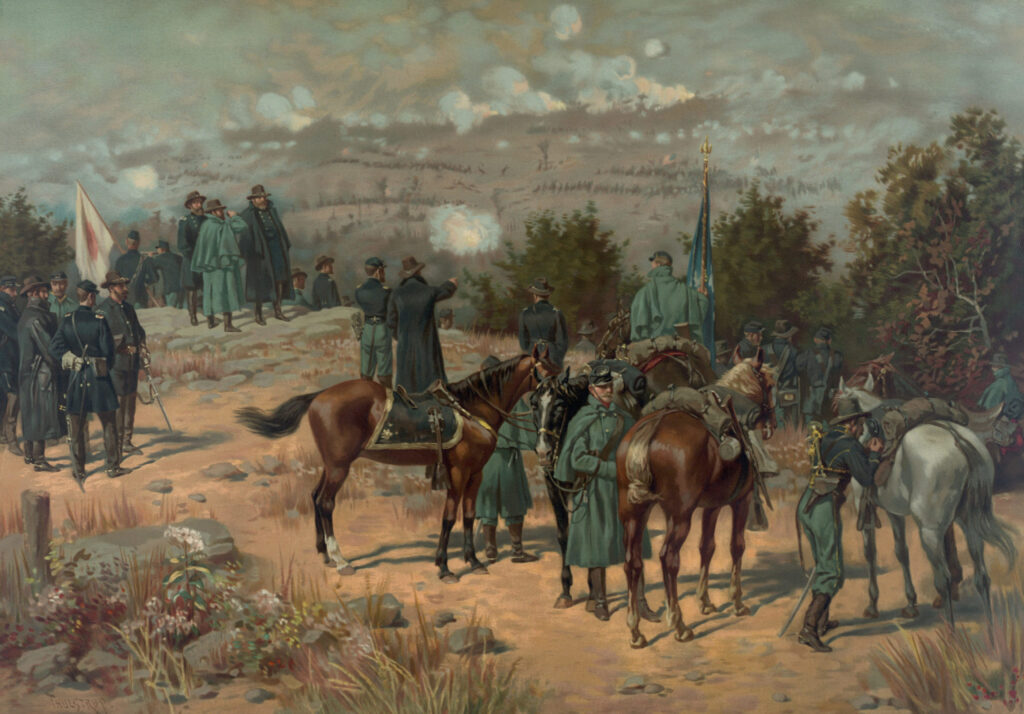The November 1863 Battle of Chattanooga was a series of battles that were fought over the course of three days. It was also a series of battles that probably should have never happened in the first place.

Around the same time, Gen. Ulysses S. Grant captured the key city of Vicksburg, Mississippi, and the Union Army defeated Robert E. Lee at Gettysburg; Gen. William Rosecrans managed to defeat Confederate Gen. Braxton Bragg at Chattanooga, forcing the south out of middle Tennessee. But Rosecrans failed to follow up on his big win in good time. When he finally did, he was soundly beaten at Chickamauga and pushed back to Chattanooga.
Gen. Thomas: The Hero of The Battle of Chattanooga
It was only because of Gen. George Henry Thomas’ determined stand at Chickamauga in September 1863 that the Union Army avoided destruction. Chattanooga was an important transportation hub at the time critical to both the Union and the Confederates. There was no going around it: both sides needed the city. So Grant replaced Rosecrans with Thomas.
Union troops had fortified Chattanooga since its capture, which prevented a frontal assault by the ill-equipped rebels, so Bragg had no choice but to lay siege to the city. Union forces began to starve, and horses began to die by the end of October 1863. He probably had no idea he would be fighting an all-star team of the Union’s best and most capable leaders.
Thomas would finish the war as the only undefeated general on either side of the war. He was commanded by Grant and would soon be joined by Gen. William T. Sherman from Vicksburg and Gen. Joseph Hooker from the Army of the Potomac. Even Maj. Gen. Philip Sheridan commanded a division during the battle.

Thomas, Sherman, and Hooker’s Plan
Thomas’ first move was to open a supply line to the city using the Tennessee River. Once the supply line was in place and secured against rebel attacks, Thomas began planning a way to break Bragg’s stranglehold on Chattanooga. His idea, of course, was to attack. Once Gen. Sherman arrived, his troops would cross the Tennessee River and hit Bragg’s right flank on Missionary Ridge while Thomas attacked the center and Hooker hit his left flank. If Bragg tried to retreat, Hooker’s forces would push southward and cut off his escape.

Bragg, meanwhile, had little useful information. He held the high ground, but he also had no cavalry, which was critical at the time to gathering intelligence on enemy movements. To make matters worse, they were stretched precariously thin along their main defensive line. Bragg didn’t help matters by dispatching 11,000 men to stem a Union advance on Knoxville – only it wasn’t going to Knoxville; it was headed to Chattanooga.
On Nov. 23, 1863, 14,000 Union troops began marching on Orchard Knob, a valley to the city’s east, easily overrunning the position’s 600 defenders in the Confederate center. Gen. Grant made his headquarters there for the rest of the battle.
The next day, Hooker advanced on Lookout Mountain, the rebels’ left flank, with three divisions. They, too, overwhelmed the defenders at the foot of the mountain. When the Confederates attempted a counterattack, they found themselves not only in a heavy fog but dangerously outflanked. They retreated into the same dense fog they charged into. Hooker informed Grant that the enemy would probably evacuate their positions during the night, and he was right. Bragg pulled his forces out.

That just left Missionary Ridge, the rebel army’s original right flank. Grant ordered Hooker to hit it from the south while Sherman advanced from the north and west. Thomas’ 24,000 men hold their positions in the center. On Nov. 25, the third day of fighting, the attack goes forward. Sherman’s men see quick success but soon tire as they meet more resistance up the mountain.
Union Victory in The Battle of Chattanooga
Things might have looked good for the rebels had it not been for Hooker’s surprise hit from the south. He launched a three-pronged assault that surrounded the surprised rebels there. At the same time, Thomas’ forces are ordered to take the Confederate rifle pits in the center of the line. His 24,000 men once again overwhelm the thin line of defense, but the Union troops don’t stop at the pits as ordered; they begin scaling the mountain.
Though the fighting was fierce, where Sherman’s Army of Tennessee was duking it out with the rebels, it was hard to maintain a battle when the center of the army was crumbling, and the southernmost forces were beginning to surrender. Bragg had no choice but to abandon the Siege of Chattanooga. The next spring, Sherman would be ready to take the fight south – to Atlanta.
Read About Other Battlefield Chronicles
If you enjoyed learning about the battle of Chattanooga, we invite you to read about other battlefield chronicles on our blog. You will also find military book reviews, veterans’ service reflections, famous military units and more on the TogetherWeServed.com blog. If you are a veteran, find your military buddies, view historic boot camp photos, build a printable military service plaque, and more on TogetherWeServed.com today.

My Great Grandfather Cicero Fox, was raised in Sevier county Tennessee and recruited into the 38th Tennessee Company along with his brother and several cousins. They fought in the battle of Chattanooga and escaped capture. They fought at Vicksburg and were captured after a siege that left them eating their mules & horses. They were released from Vicksburg in a prisoner exchange.
Later my Great Grandfather was captured in the battle of Nashville and in-prisoned in Ohio. At the end of the War he was released. and reportedly made his way home barefooted and ragged, where his wife fainted when he walked into the front yard.
I see him as a good. man who was a product of his time, living a good life after the War as a successful carpenter.